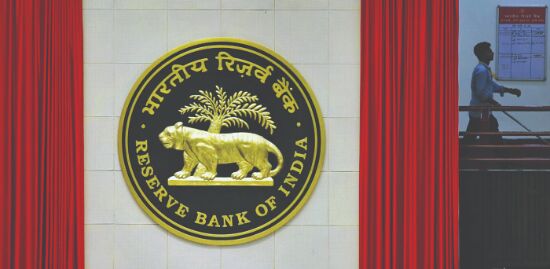Covid 2nd wave triggers raft of growth forecast revisions: RBI

Mumbai: Reserve Bank of India on Thursday said that the second wave of COVID-19 pandemic has triggered revision of growth projections for the current financial year with consensus gravitating towards its earlier forecast of 10.5 per cent.
The central bank, in its annual report for 2020-2021, further said that previous year has left a scar on the economy and "in the midst of the second wave, as 2021-22 commences, pervasive despair is being lifted by cautious optimism built up by vaccination drives."
"The onset of the second wave has triggered a raft of revisions to growth projections, with the consensus gravitating towards the Reserve Bank's projection of 10.5 per cent for the year 2021-22 — 26.2 per cent in Q1, 8.3 per cent in Q2, 5.4 per cent in Q3 and 6.2 per cent in Q4," it said. The pandemic, it added, "is the biggest risk to this outlook. Yet, upsides also stem from the capex push by the government, rising capacity utilisation and the turnaround in capital goods imports."
RBI further said that a collective global effort to fight the pandemic will surely bring better results than individual countries fighting on their own.
It also said the conduct of monetary policy in 2021-22 would be guided by evolving macroeconomic conditions, with a bias to remain supportive of growth till it gains traction on a durable basis while ensuring inflation remains within the target. According to it the pace of contagion in the second wave of COVID-19 pandemic has been alarming, stretching the health infrastructure in terms of the capacity to handle a surge of this size and speed.
The report said the deterioration in major fiscal indicators in 2020-21 may be attributed to the pandemic superimposed on a cyclical slowdown in tax revenues and a counter-pandemic fiscal push through higher government expenditure.
"Going forward, as growth revives and economy gets back on track, it is important for the government to adhere to a clear exit strategy and build fiscal buffers, which can be tapped into in events of future shocks to growth," the RBI said.
For April and early May 2021, available high frequency indicators present a mixed picture, it said. While mobility and sentiment indicators have moderated, several activity indicators have held their own and shown resilience in the face of the second wave.
Goods and services tax (GST) collections crossed the Rs 1 lakh crore mark for the seventh consecutive month in April and notched up the highest level on record, suggesting that manufacturing and services production has been maintained, it said.
Amid uncertainties arising out of the second wave of COVID-19, the Reserve Bank on Thursday said that a durable revival of private consumption and investment would be critical for sustaining economic growth post-pandemic.
Observing that 2020-21 has left a scar on the economy, RBI in its annual report said, "in the midst of the second wave as 2021-22 commences, pervasive despair is being lifted by cautious optimism built up by vaccination drives."
In a separate box on what would drive growth recovery after the crisis, RBI said, "for a self-sustaining GDP growth trajectory post-COVID-19, a durable revival in private consumption and investment demand together would be critical as they account for around 85 per cent of GDP."
Typically, it added, post-crisis recoveries are led more by consumption than investment.
"However, investment-led recoveries can be more sustainable and can also lift consumption in parts by better job creation. In either case, private demand plays a pivotal role," the report added.
The RBI has also cautioned banks to closely monitor their bad loans and prepared themselves for higher provisioning in the light of the Supreme Court lifting ban on non-performing asset (NPA) classification and outbreak of the second COVID-19 wave. The waiver of compound interest on all loan accounts which opted for moratorium during March-August 2020 may put stress on the financial health of banks, the report said. The apex bank, however, expressed confidence that banks are better positioned than before in managing stress in balance sheets in view of higher capital buffers, improvement in recoveries and a return to profitability.
"Stress tests indicate that Indian banks have sufficient capital at the aggregate level even in a severe stress scenario. Bank-wise as well as system-wide supervisory stress testing provide clues for a forward-looking identification of vulnerable areas," RBI said in its annual report 2020-21.
The report has emphasised the need for banks to keep a tab on the NPAs and accordingly earmark capital for the provision. On inflation, the report said supply-demand imbalances may continue to exert pressure on food items like pulses and edible oils, prices of cereals may soften with bumper foodgrain production in 2020-21.
"Pressures from food items like pulses and edible oils are likely to persist in view of supply-demand imbalances, while cereal prices may continue to soften with the bumper foodgrain production in 2020-21," it said.



